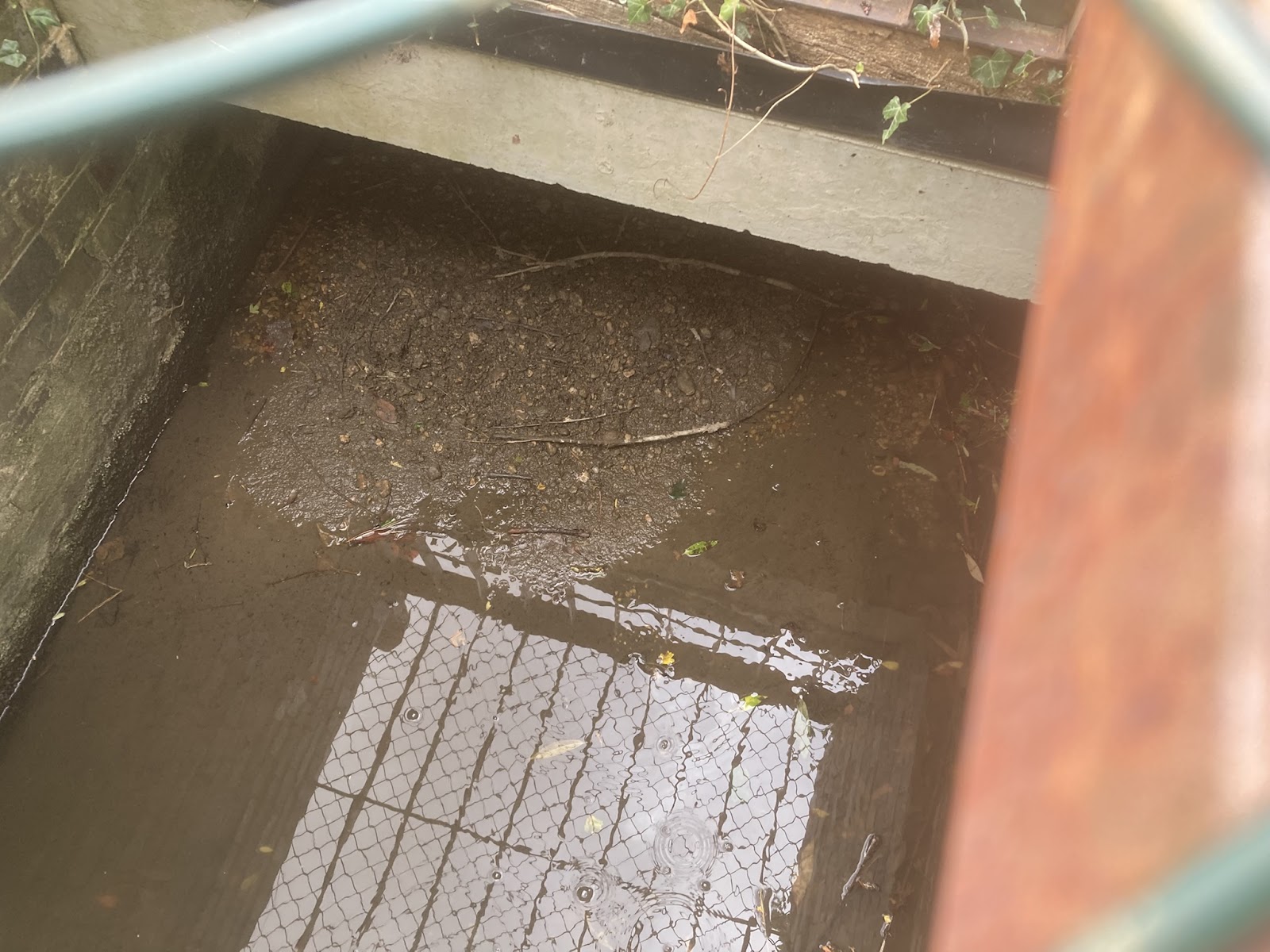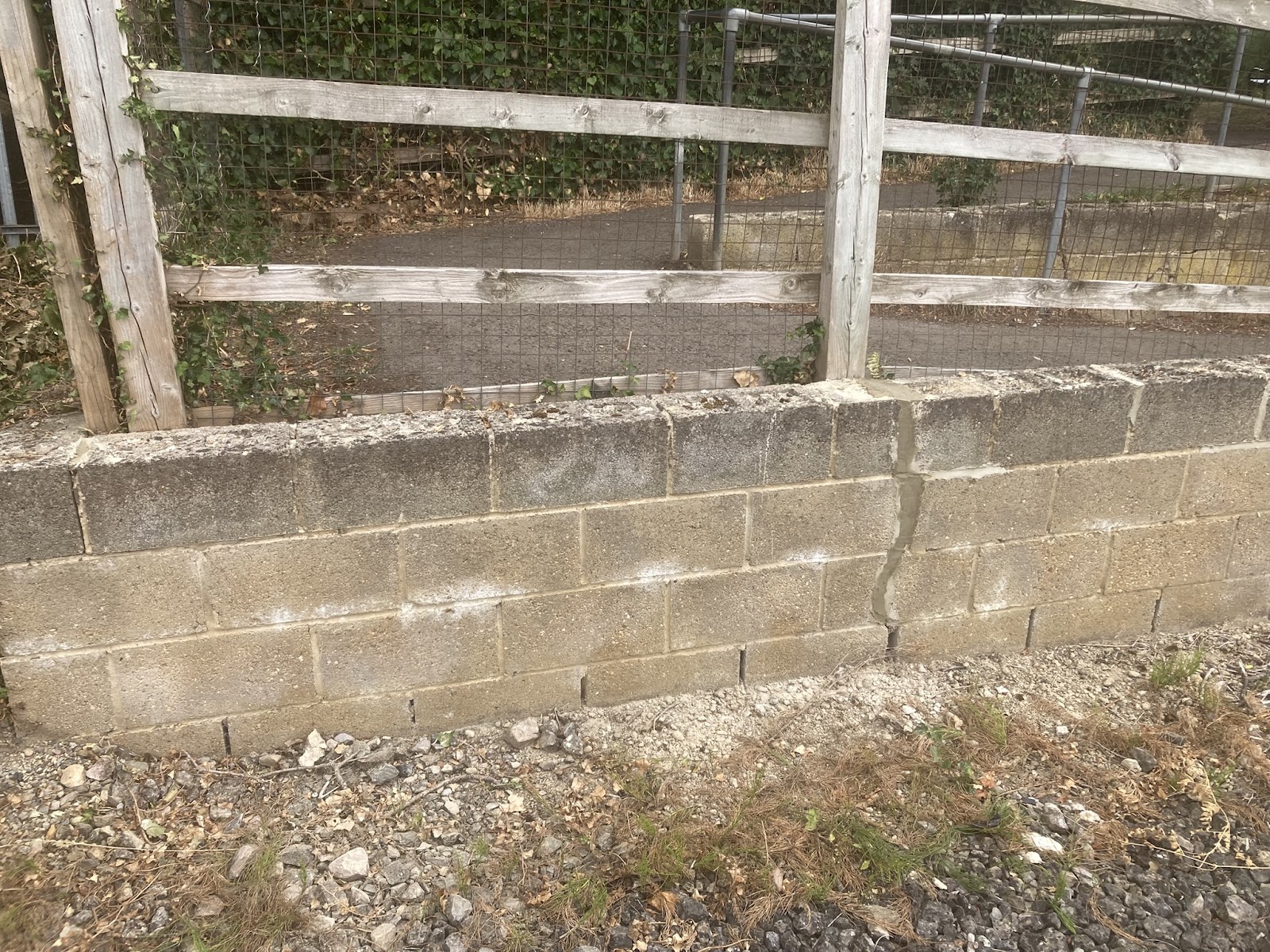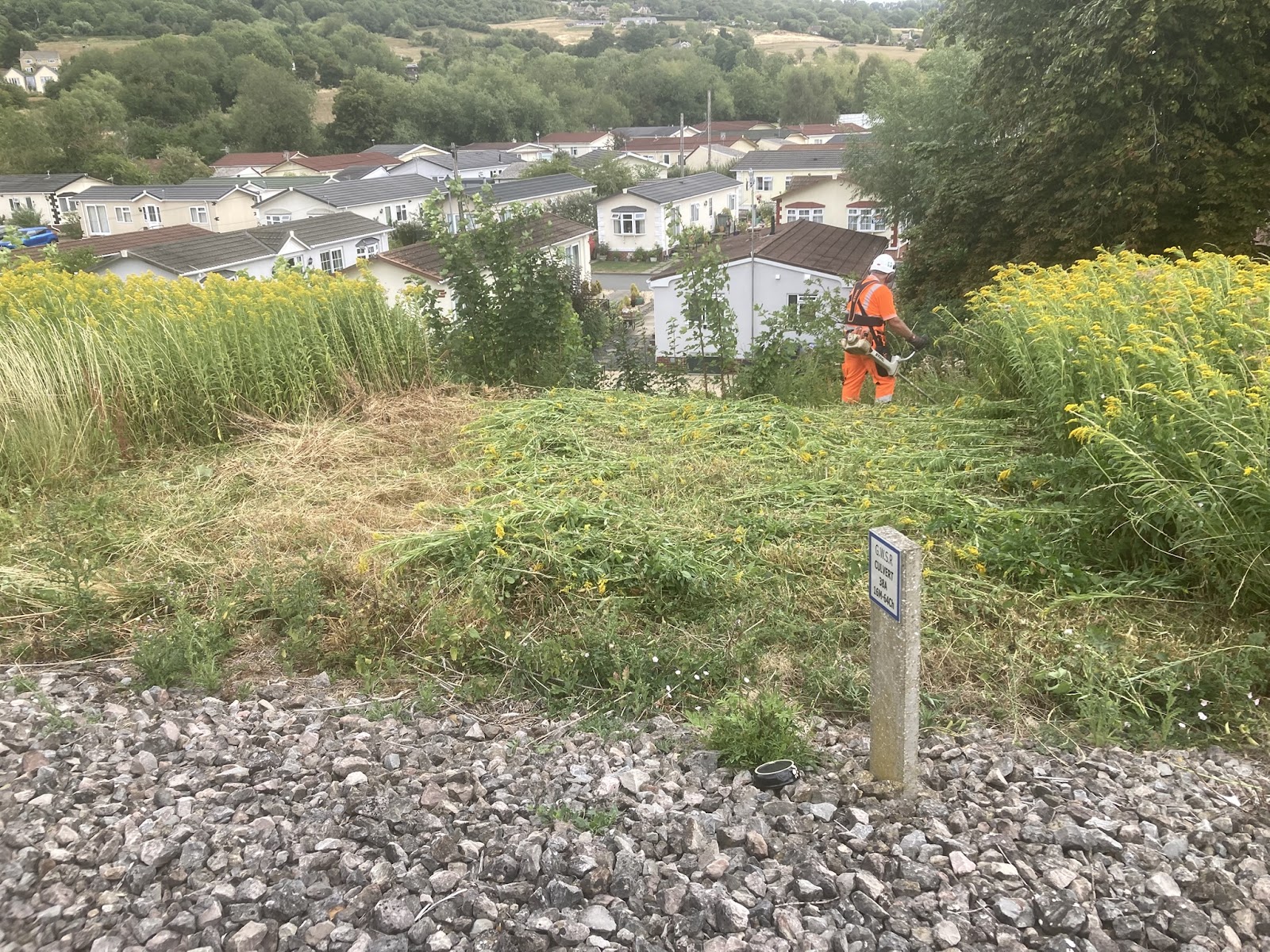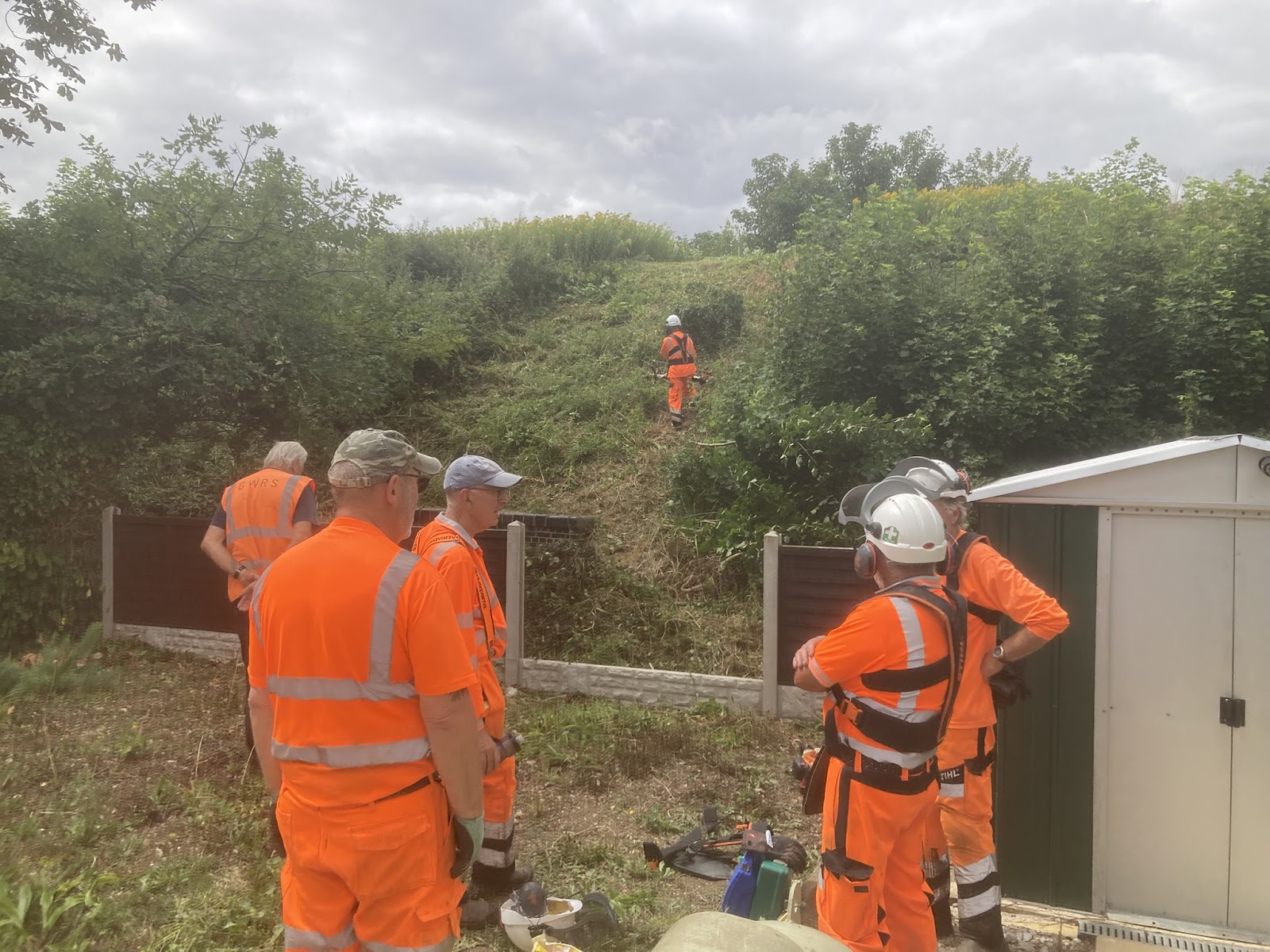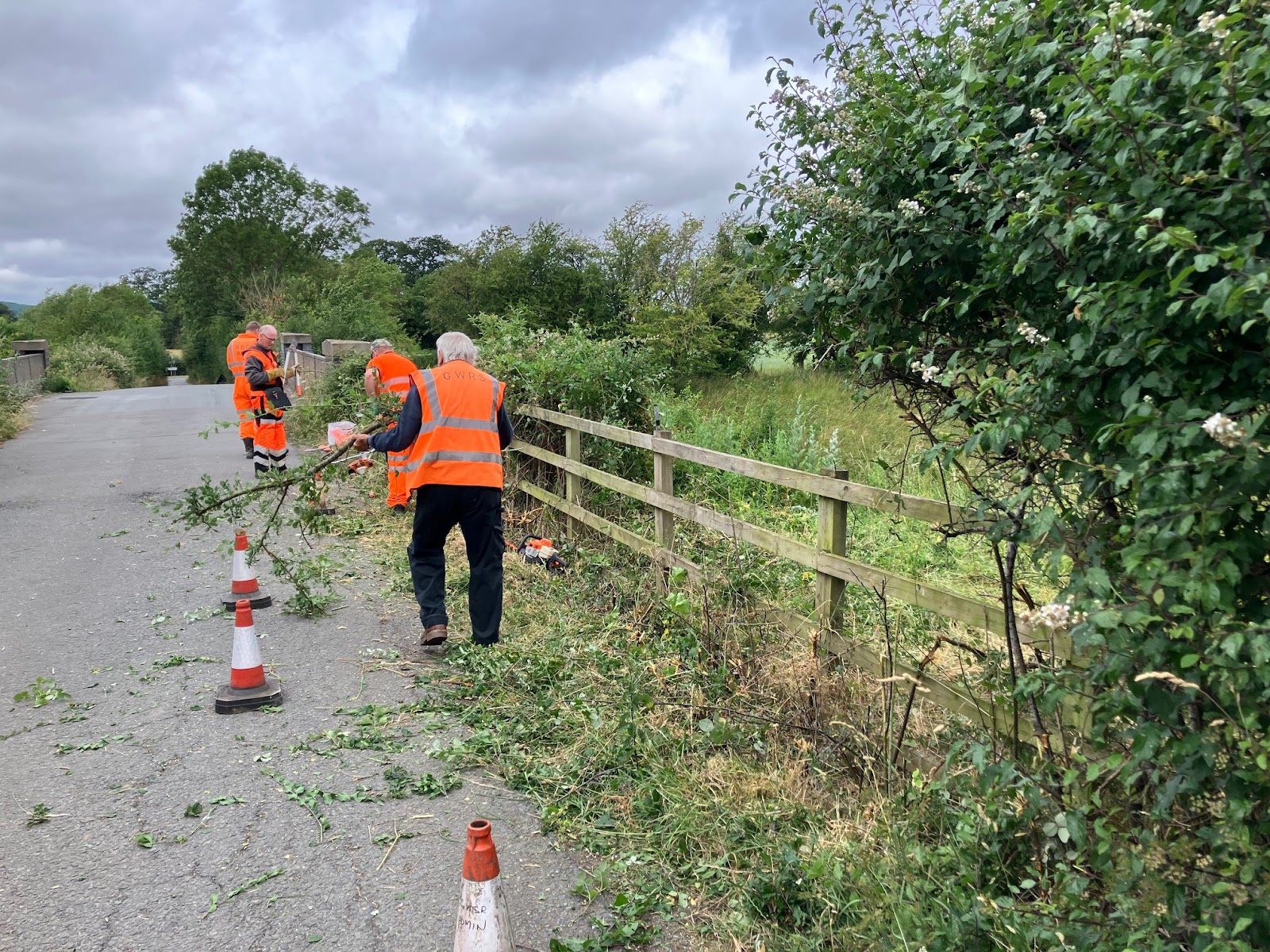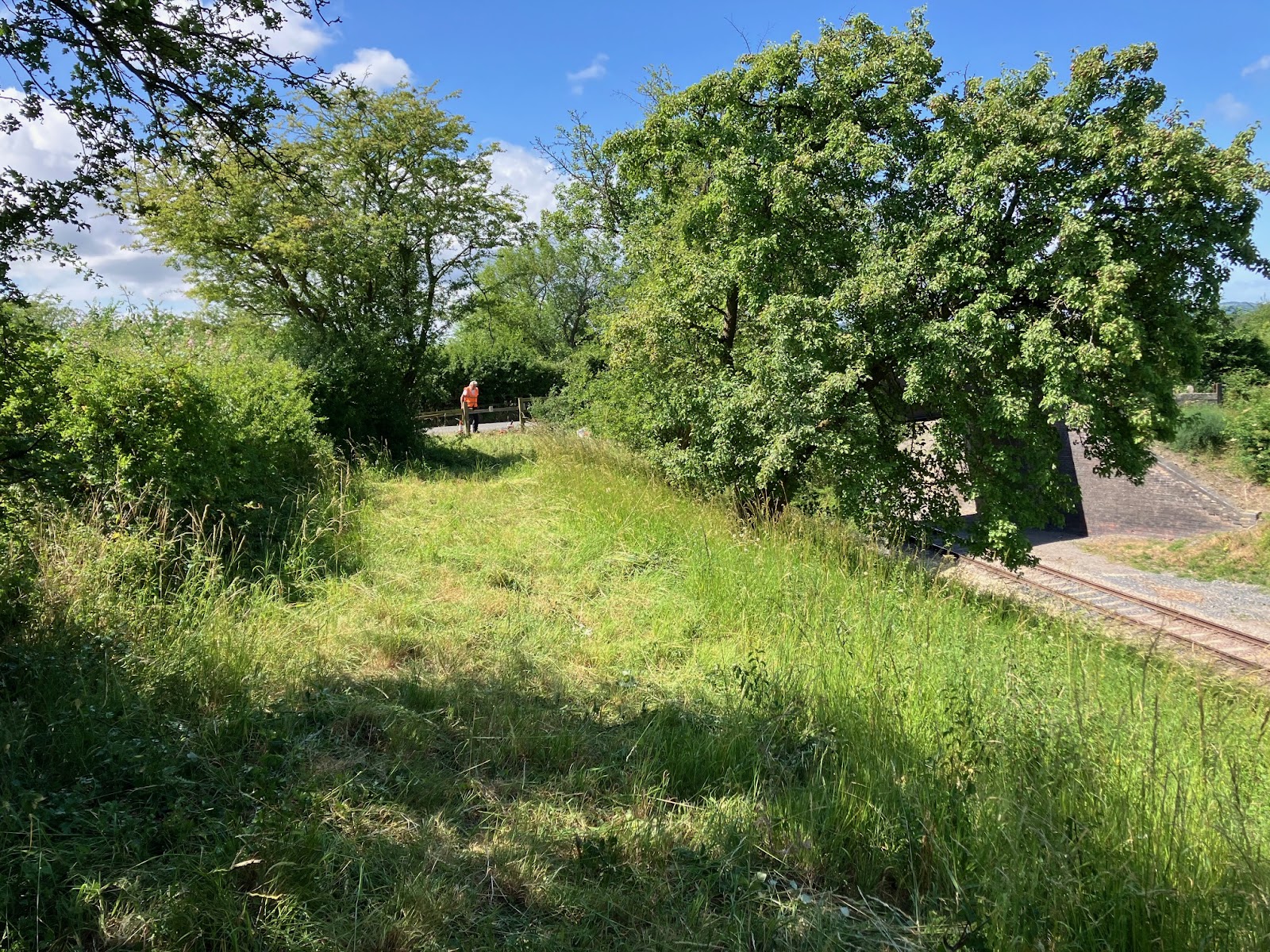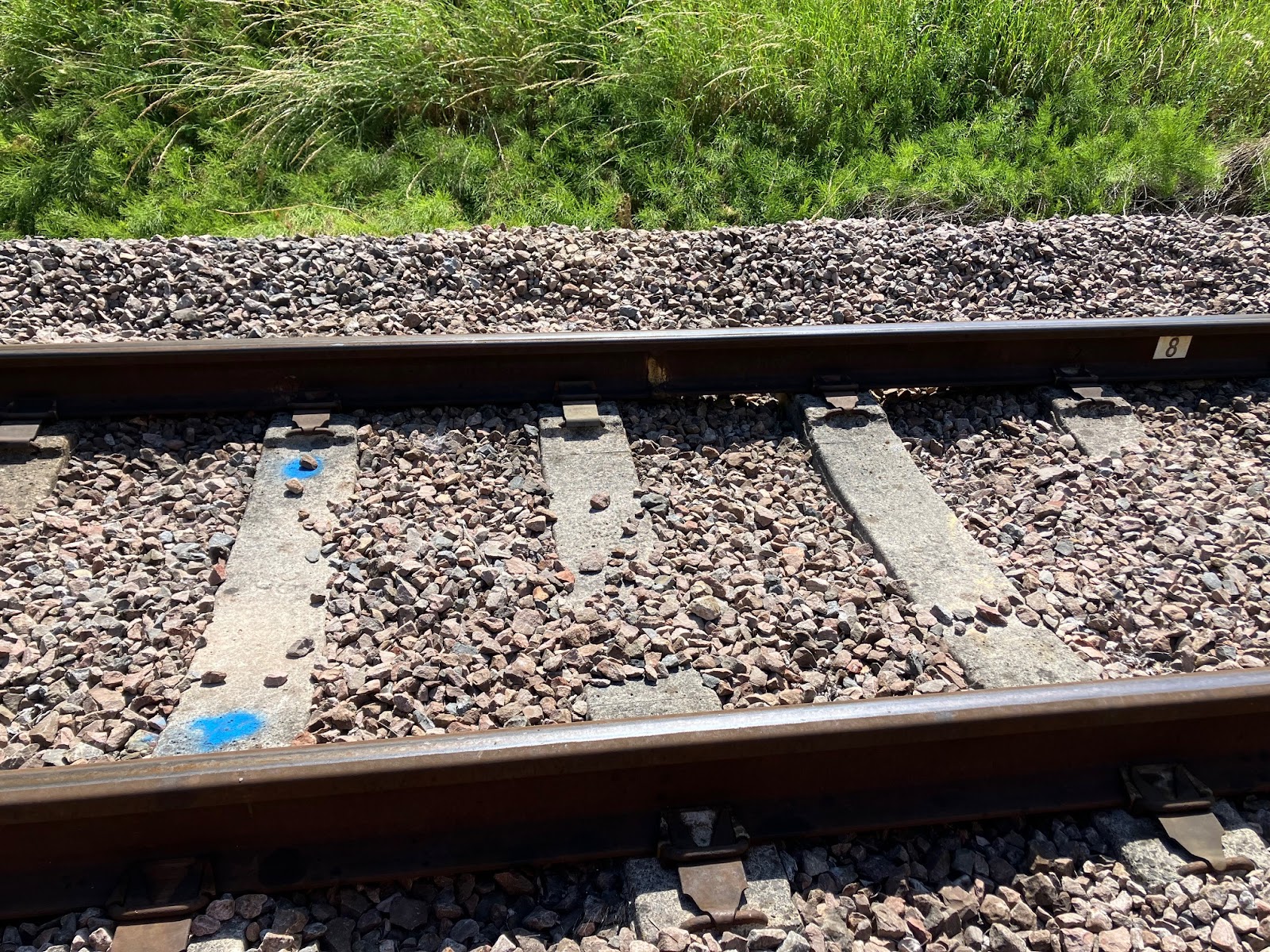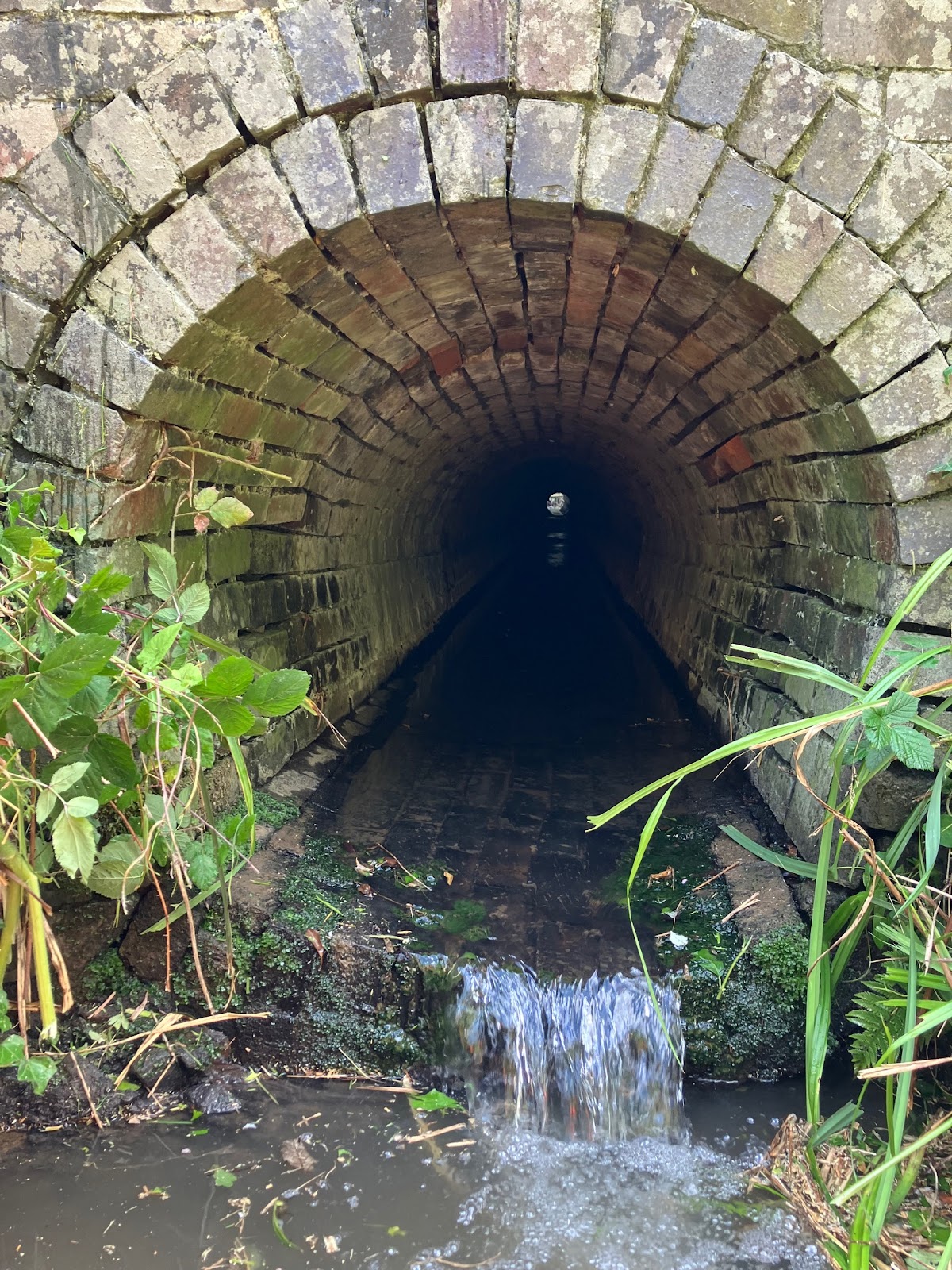Thursday 24th July
This year, the programme of detailed inspections of our civil engineering structures includes some of the larger culverts and bridges over watercourses. To facilitate the visit by the external contractors, we are clearing the access routes, and any obscuring vegetation. At the beginning of the month, the team tacked some of those at the northern end of the line, today it was the turn of the southern most end at Cheltenham Racecourse and south of Hunting Butts tunnel.
A
team of nine arrived early at Winchcombe yard, the school holidays
making a significant reduction in road traffic and consequently
quicker journey times. We loaded up three vehicles with our tools for
the day – then all set off for Swindon Lane. With the closure of
the A435 past the Racecourse, this proved to be a slow journey via
Winchcombe and Prestbury. All the team then carried the equipment to
the first work site, culvert 44A. Martin, Ian and John tackled the
down side inlet, this involved some chain saw work to remove branches
of several fallen trees. Dave, Nigel and Peter headed to the up side;
quite a walk as that as access is from the adjoining
field, not
directly down the embankment.Nigel and Peter working on the up side outlet of 44A. Very rarely is it possible to stand on the culvert invert here. [Photo by Dave] 44A down side inlet headwall. [Photo by Dave] 
Looking right through 44A from the down side. [Photo by Dave] We had to leave one big tree trunk on the access to 44A down side; it is too big for our chainsaws. [Photo by Sarah]
Meanwhile
Jonathan, Polly and Andrew took a small set of tools further south to
culvert 45A, Wymans Brook. This
is on the boundary of GWSR land; further south the embankment is
breached by Prince Regent Avenue. After clearing the west side exit,
they headed over to the east side. Here the challenge is to find the
chimney manhole which is above the burred headwall where the pipe
from Pitville Park lake ends. Infrastructure Manager Sarah joined for
the search, her first visit to this outpost of the GWSR empire.
Having completed the work at 44A, the other two teams then arrived.
This enabled three of
the team using brush
cutters to very quickly clear an access route to the chimney. After
that it was lunchtime.An interesting piece of ironwork we found in the outlet of 45A Wymans Brook. Has anyone an idea was it was used for? Jonathan raking up cuttings from the bed of 45A outlet. The 45A inlet manhole chimney. Lunchtime at Prince Regent Avenue. This time of year, deck chairs are important items of kit. [Photo by Jonathan]
After
lunch, all nine headed for Cheltenham Racecourse to tackle the Hyde
Brook watercourse which runs through underbridge 42A. Ian,
John, Peter and Andrew tacked the up side; access to that is from the
lineside by the Cheltenham Racecourse Up Advanced Starting signal.
The other five dealt with the down side inlet – accessed from the
footpath beside the racecourse road. This was another location where
the winter storms had brought down some large branches. They also
pruned a large willow tree which was overhanging the footpath.Looking through bridge 42A from the up (outlet) side - reflection of one of the team working on the inlet down side just visible.
Bridge 42A, Hyde Brook inlet (down side) after clearing. [Photo by Jonathan]
 |
| Close up of the 42A inlet wing and headwalls - this is a big structure, hence why it is a bridge not a culvert. [Photo by Dave] |
Wildlife report:
One word sums up
today – blackberries. Lots of berries ripening at all of our work
sites. Our taste testers found some of the sweetest on the down side
near 44A. Some ripening plums on a tree at Wymans Brook were noted –
but they are not quite ripe enough to eat yet. Blackberries.












